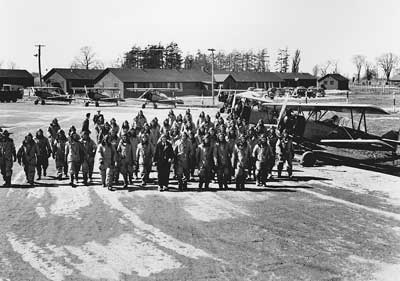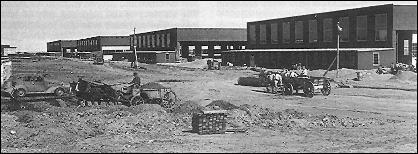|
Historical Note: The RCAF and the Birth of the BCATP
In 1939 the RCAF had only 3100 men, 36 modern combat aircraft and 180 obsolete aircraft.
At the start of the war, Canadian and British officials decided that Canada was to become the aircrew training center for the entire Commonwealth.
This was the origin of the British Commonwealth Air Training Program. Recruits came from all over the Commonwealth - Canada, Britain, South Africa, Australia, New Zealand, and Rhodesia.

The initial plan called for the creation of Elementary Flying Training Schools, Service Flying Training Schools, and Air Observer Schools.
as well as other units for recruiting, training, maintenance, and administration. The first schools opened in April 1940, and in late 1940
the first trickle of BCATP graduates began to go overseas. In the initial stages of the Plan many of the aircrew graduates had to be retained in Canada
as instructors for the further expansion of the BCATP. However, as the number of personnel available for service abroad increased,
it became possible to organize new RCAF squadrons in Britain.

By 1942 the plan was in full operation with 72 schools, depots and other formations. At its peak capacity, the BCATP produced over 3000 graduates a month,
including 520 pilots with elementary training, 544 pilots with service training, 340 air observers, and 580 wireless operator-airgunners. In less than three years
the program had trained over 82,000 aircrew. In early 1944 training was outstripping the need for aircrew and the BCAPT began closing down and at the end of March 1945,
the BCATP was officially terminated. It had done its job beyond all expectations
 |